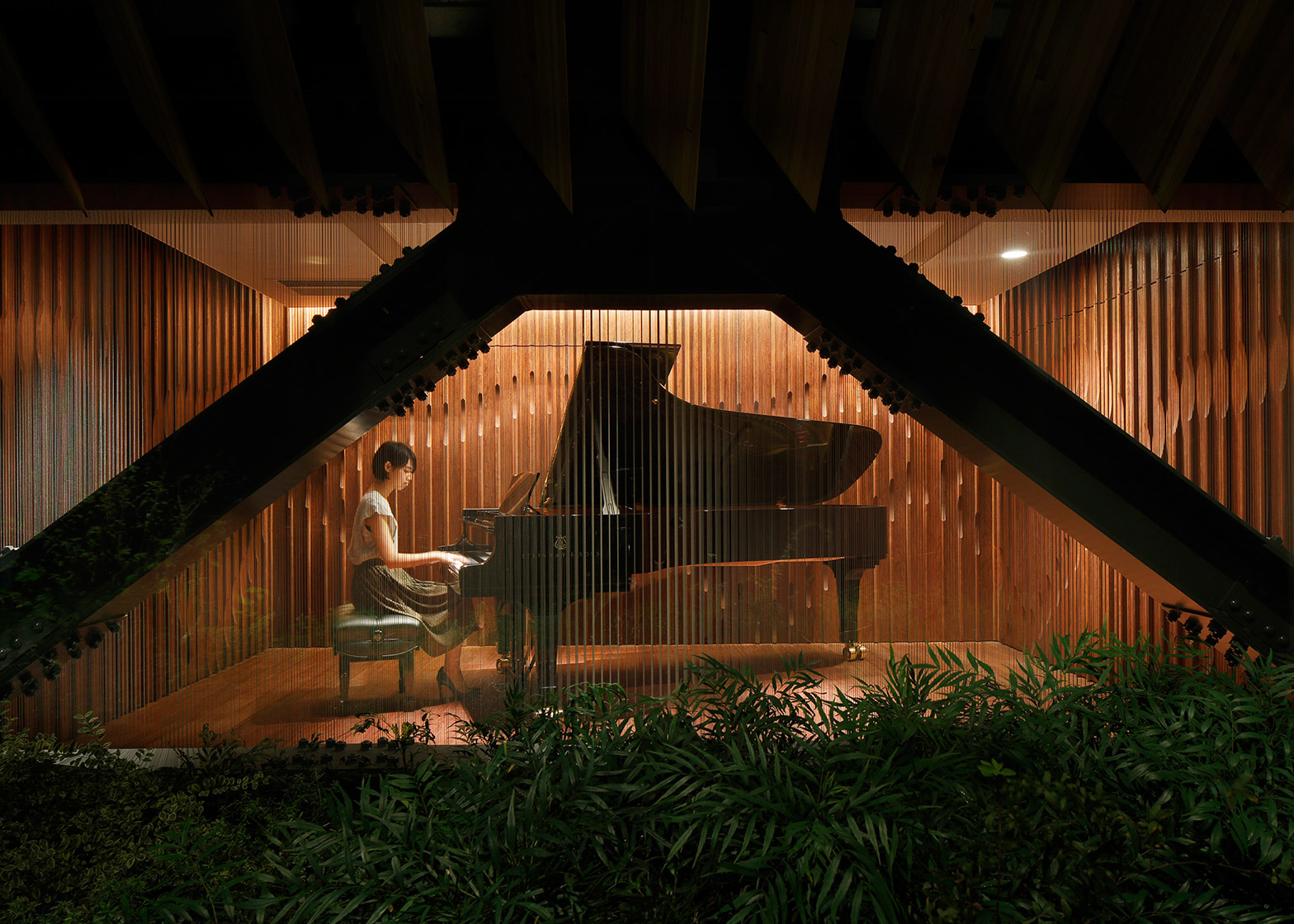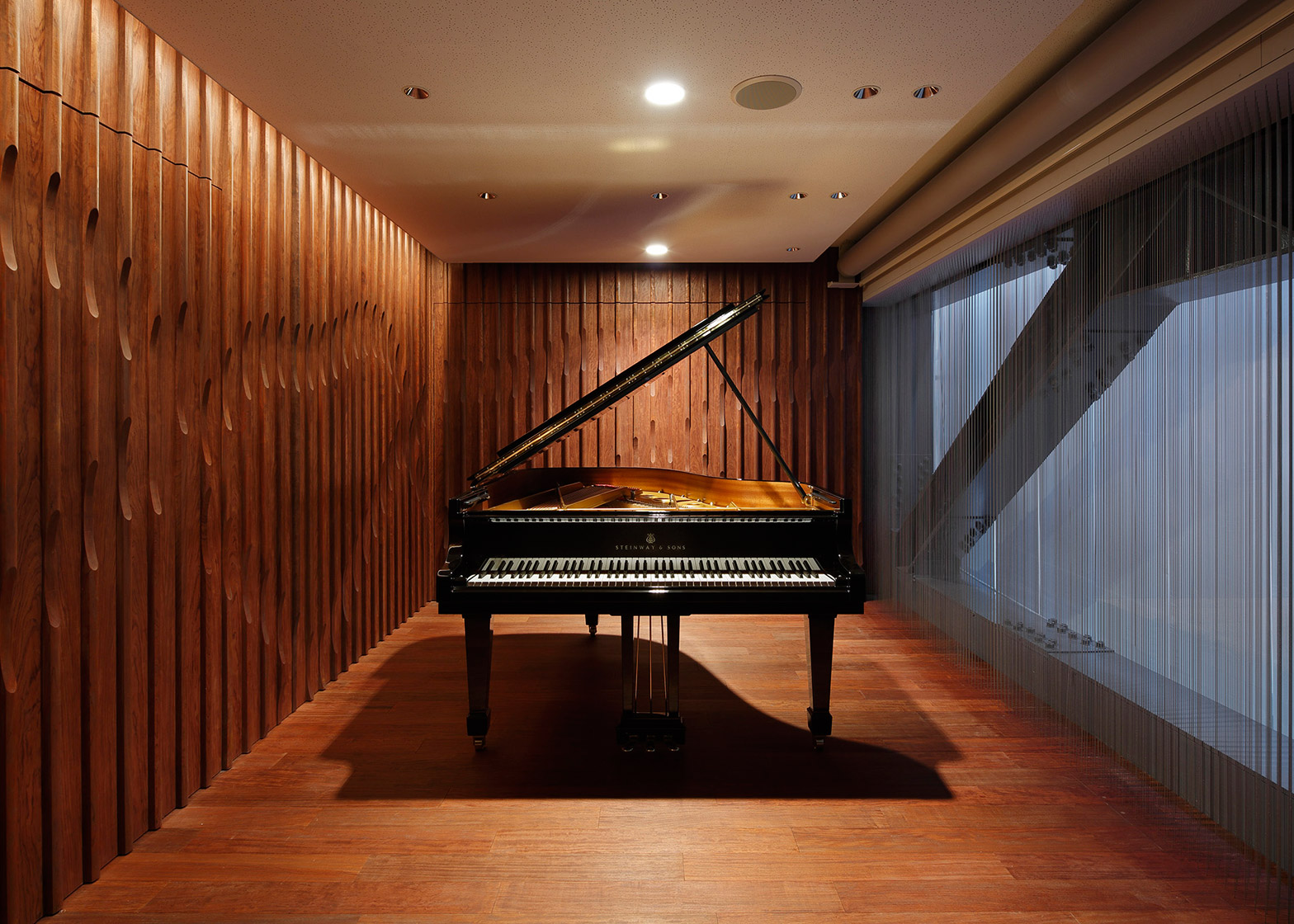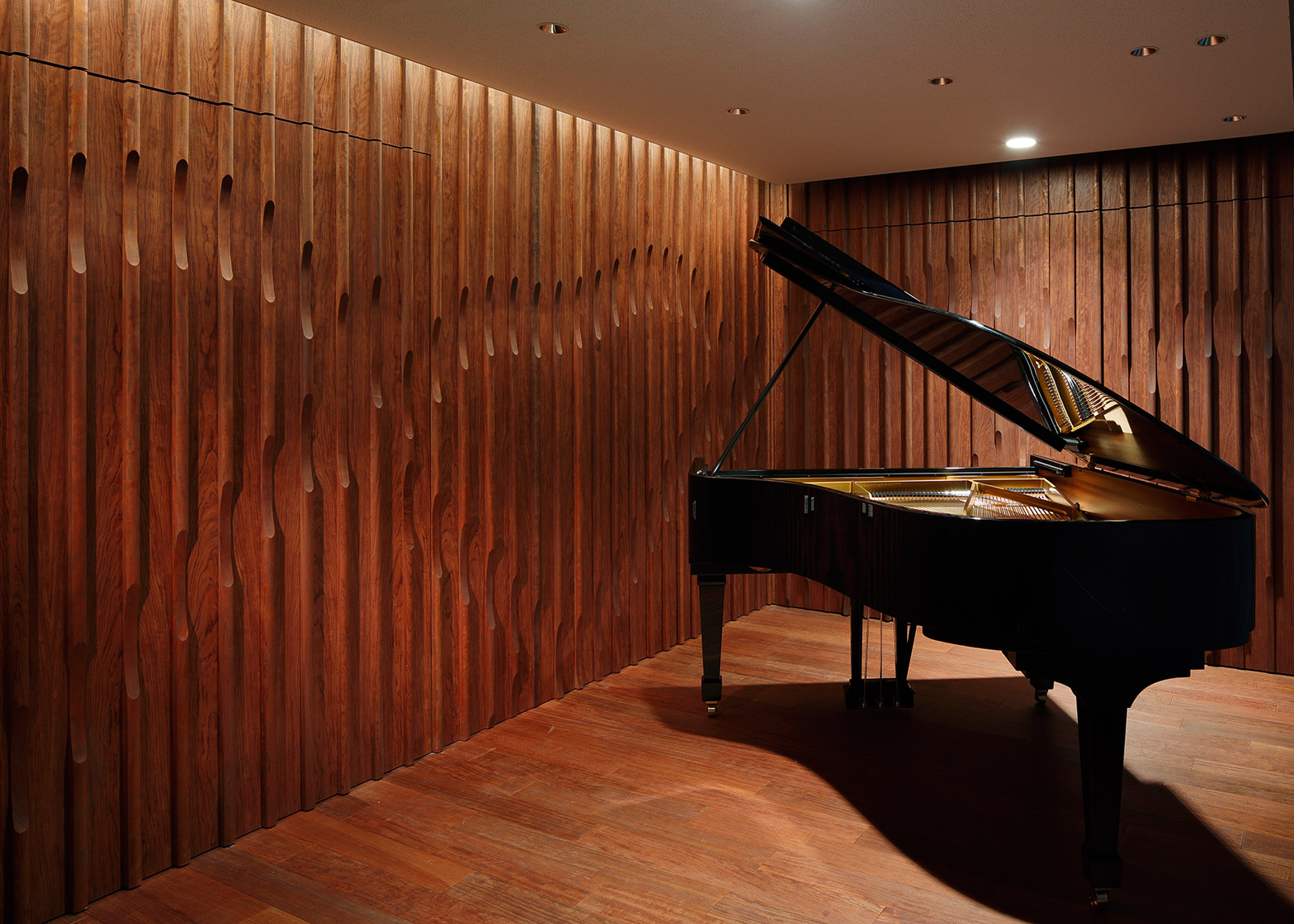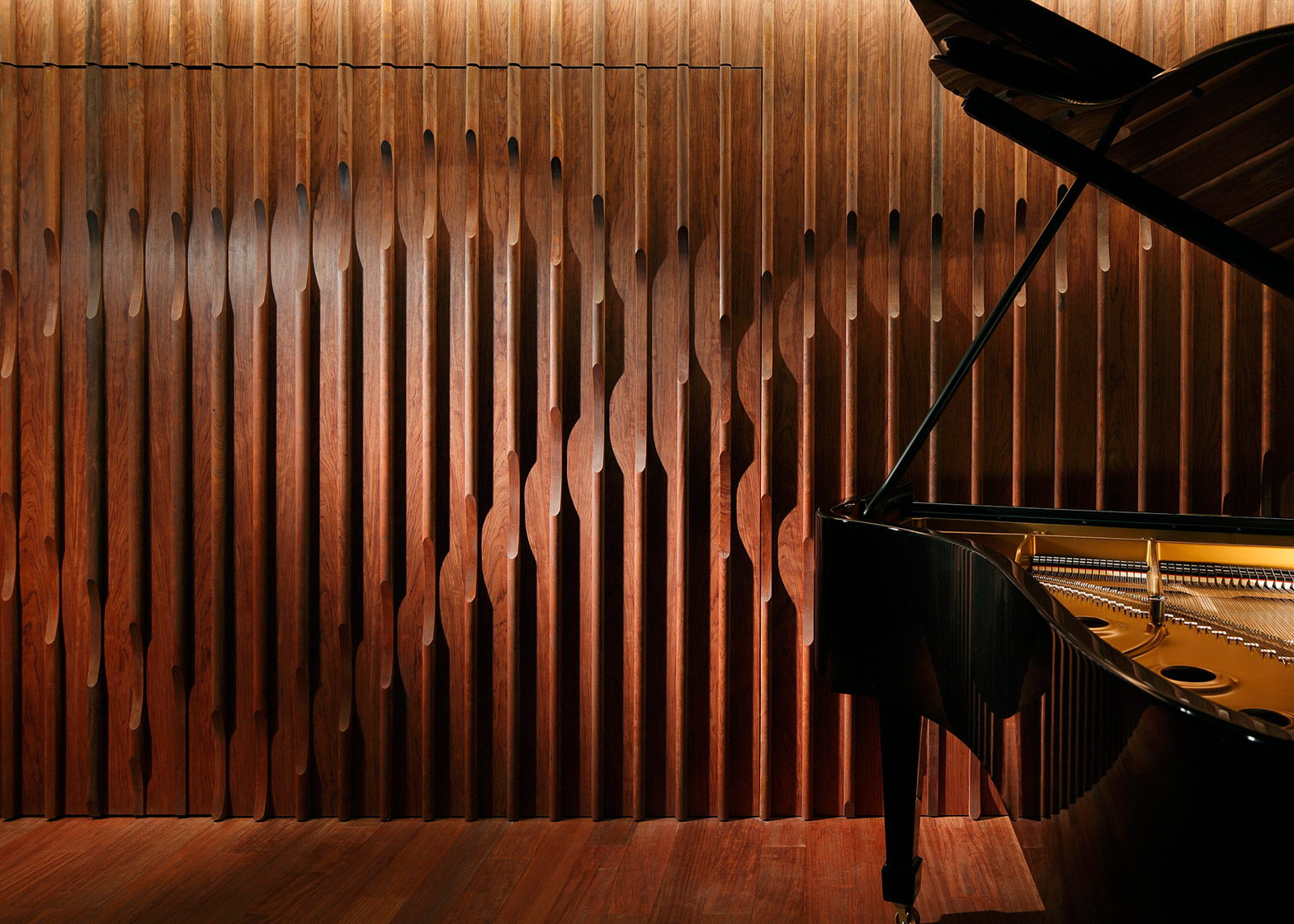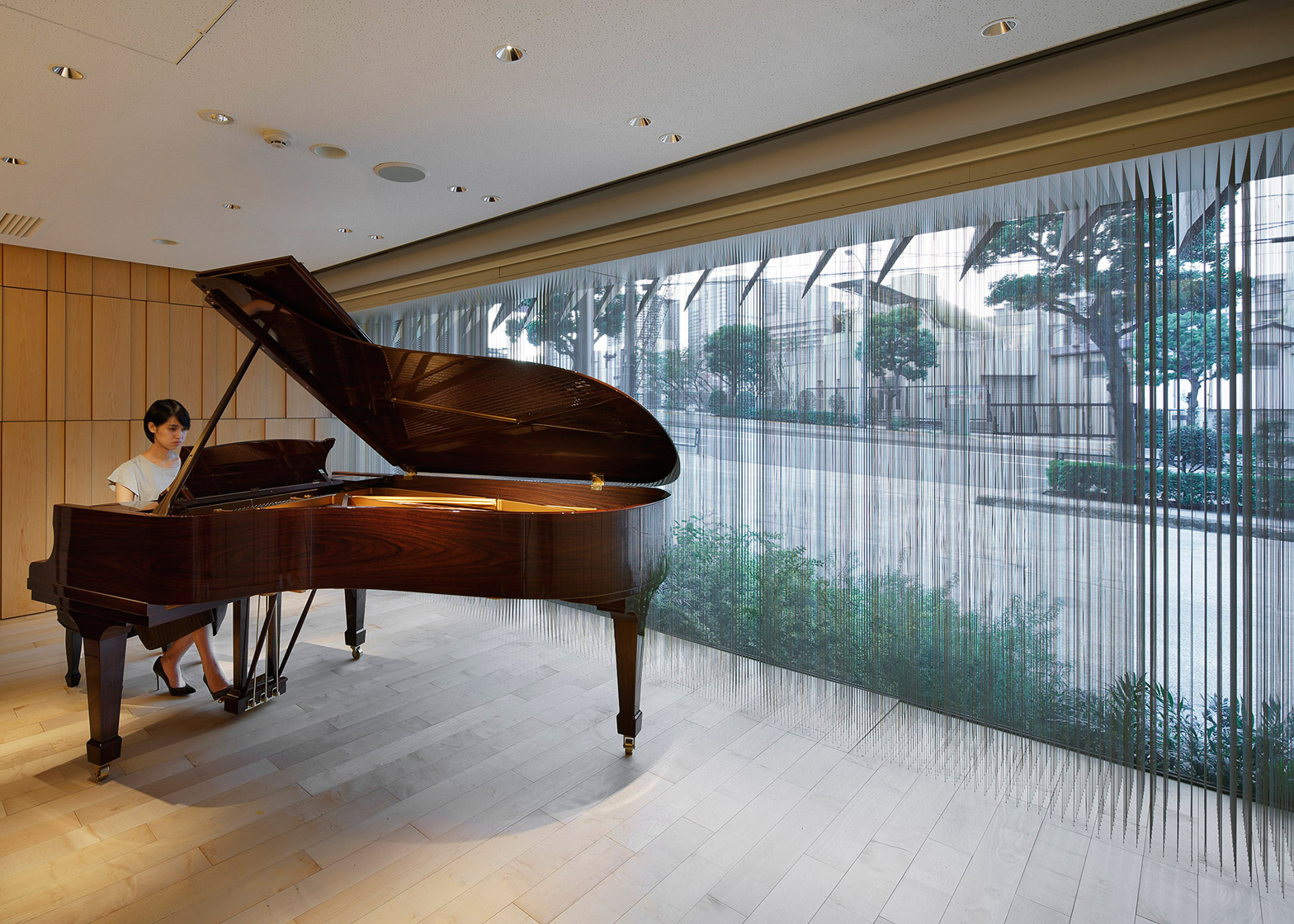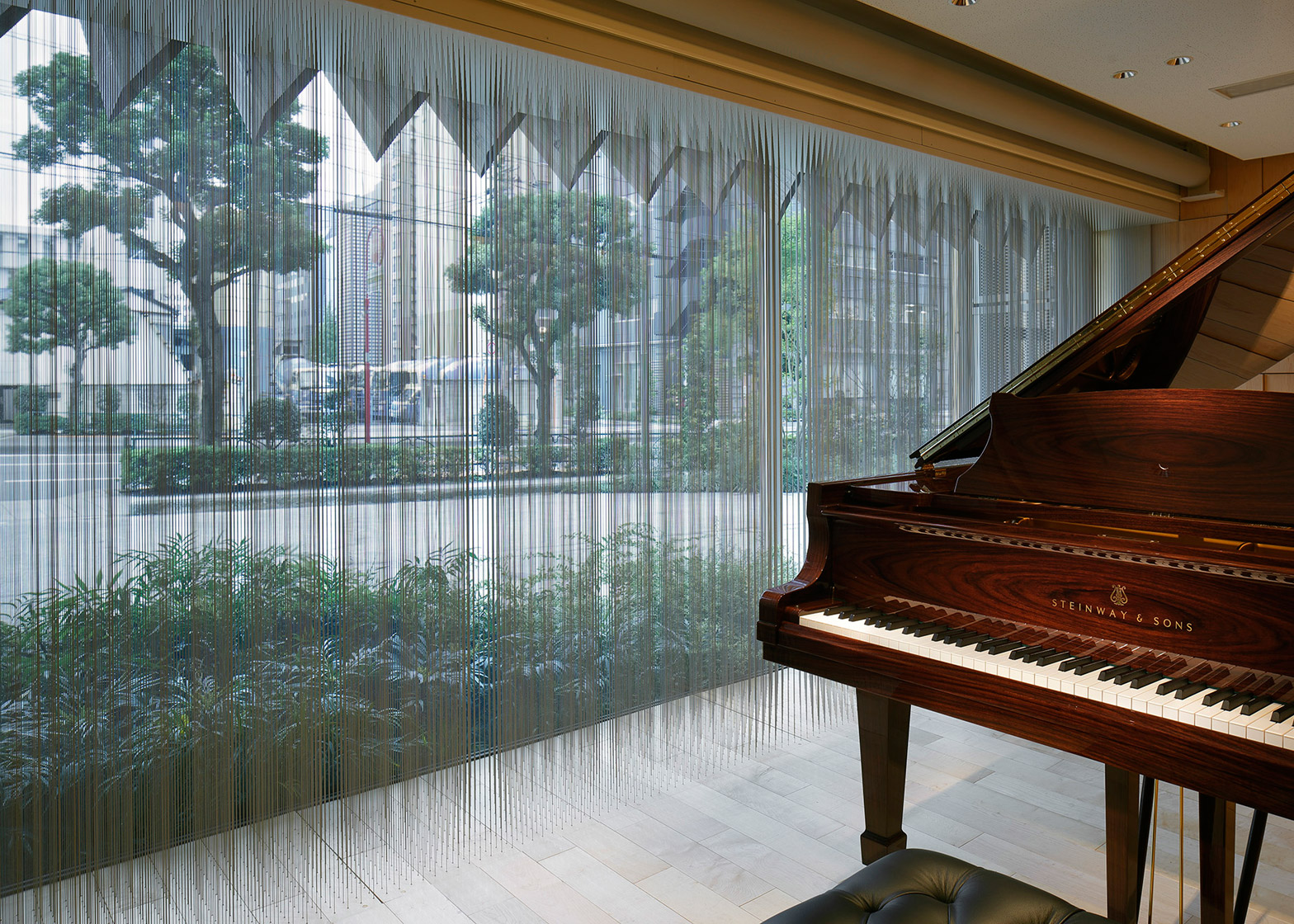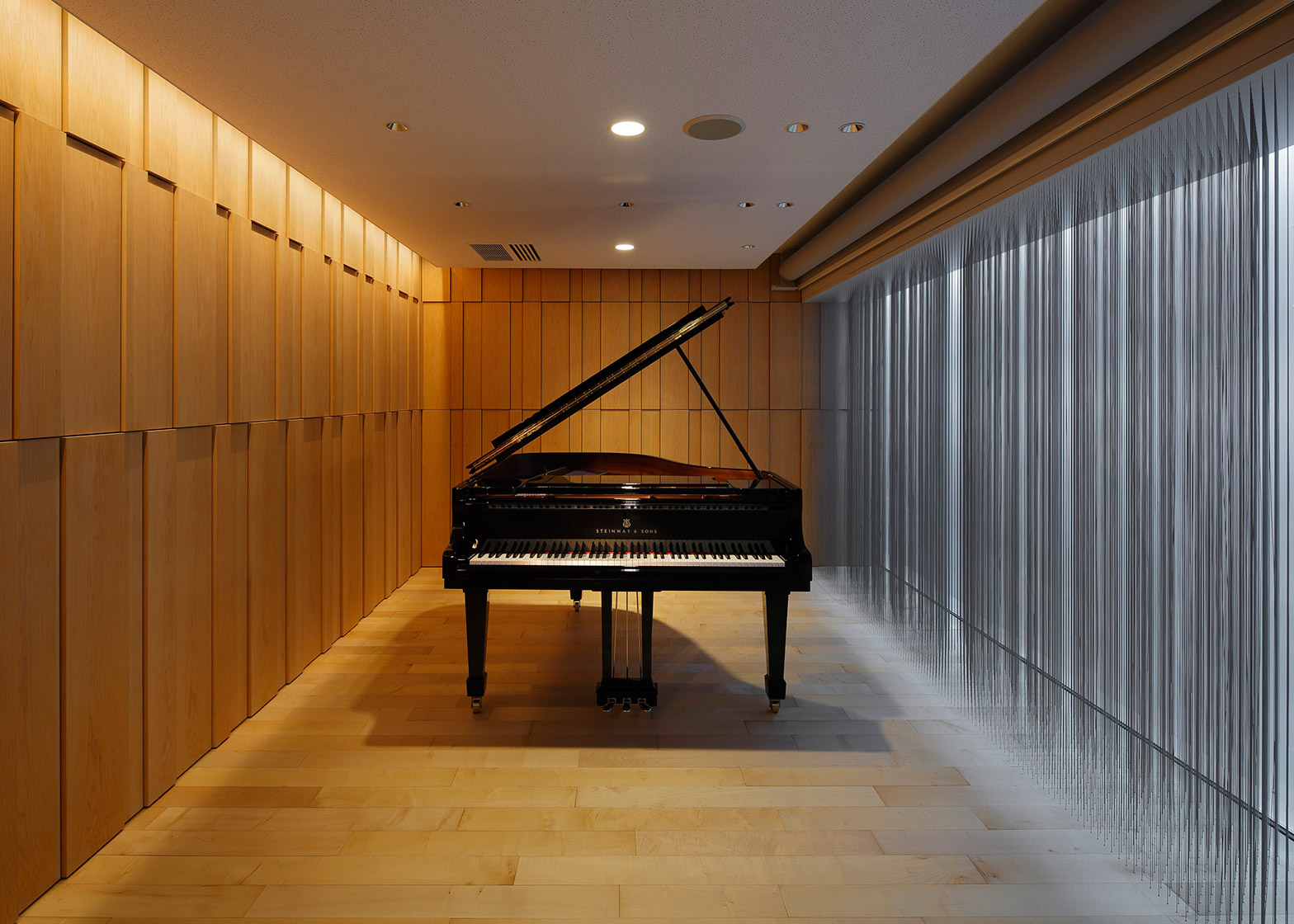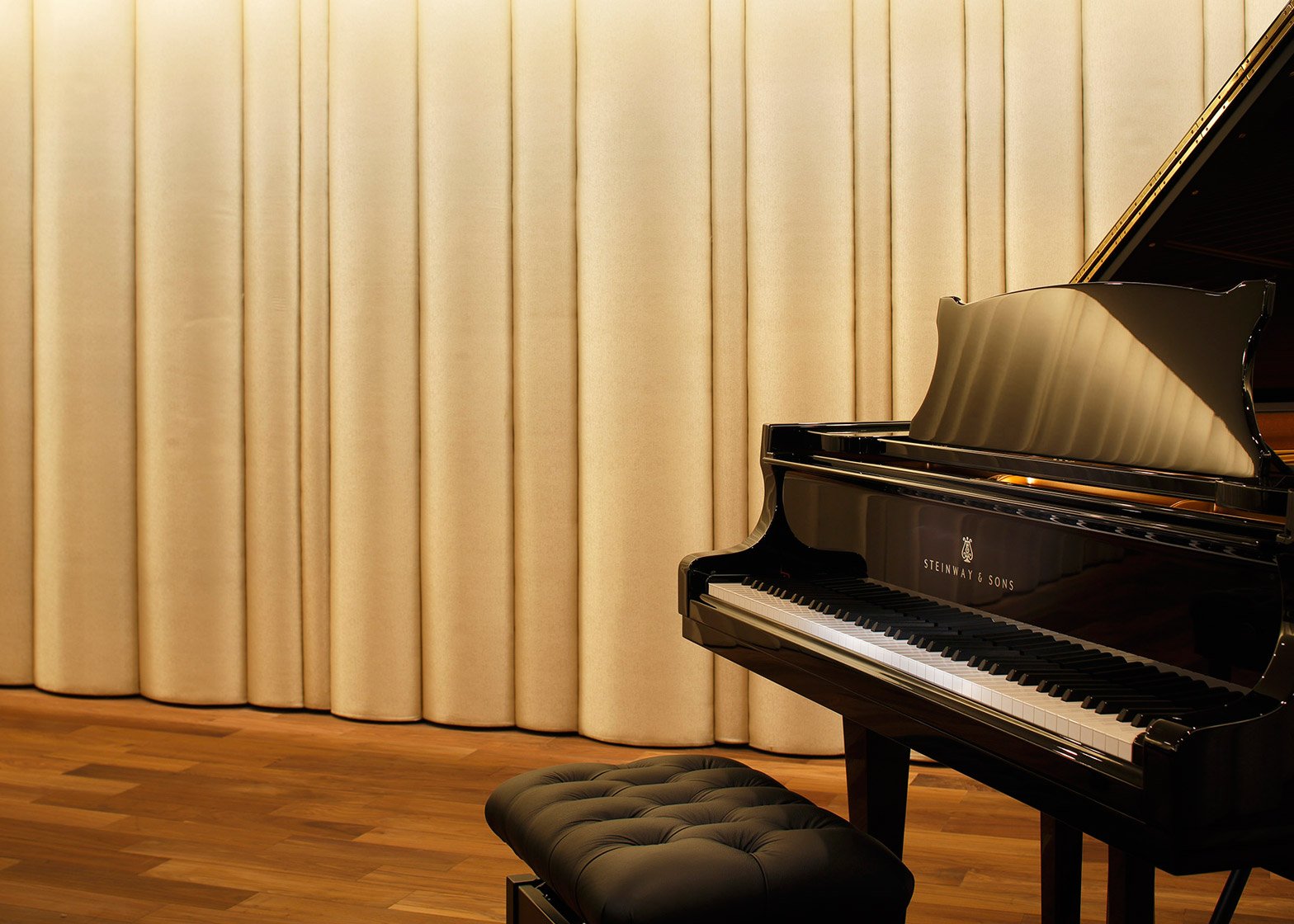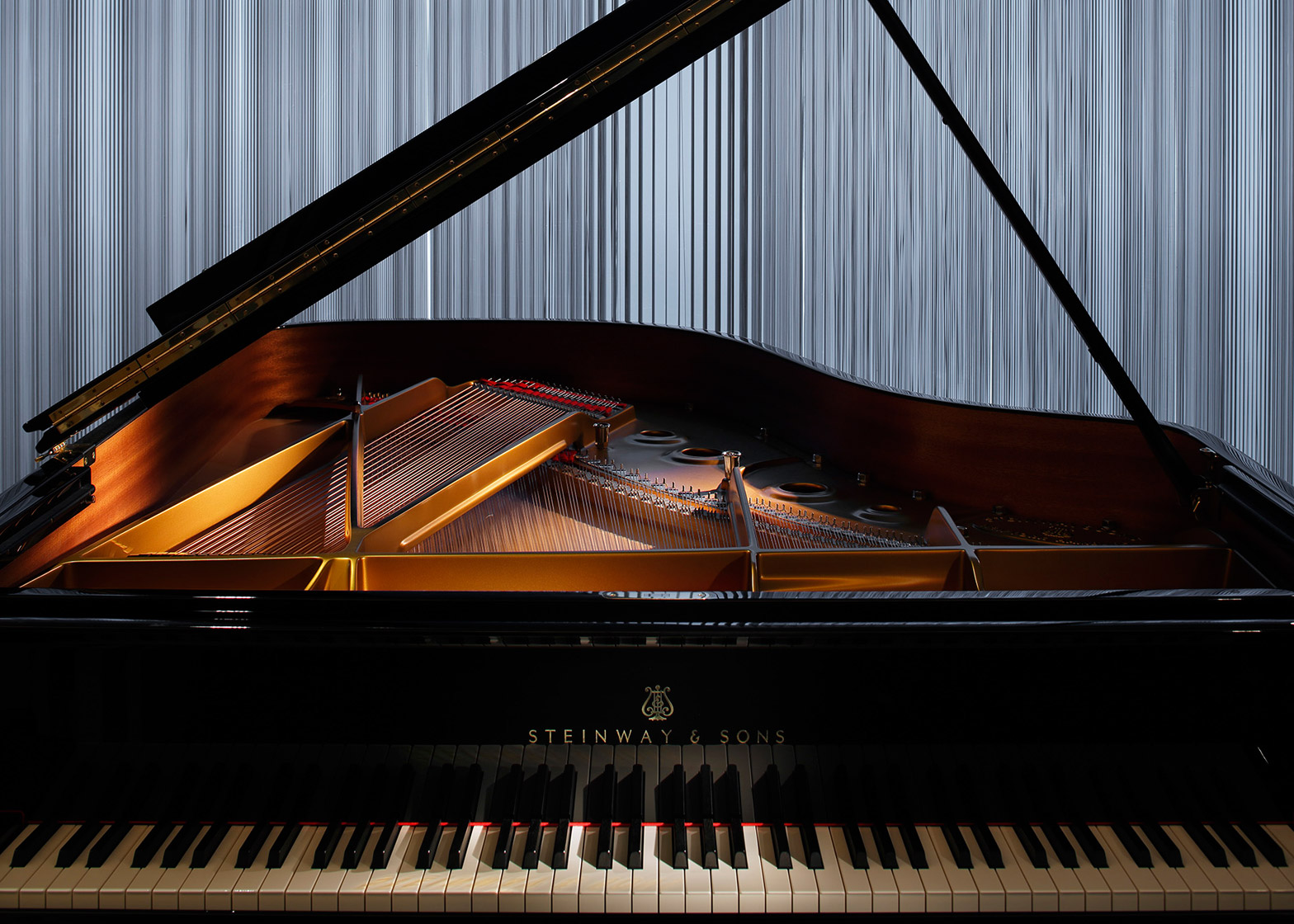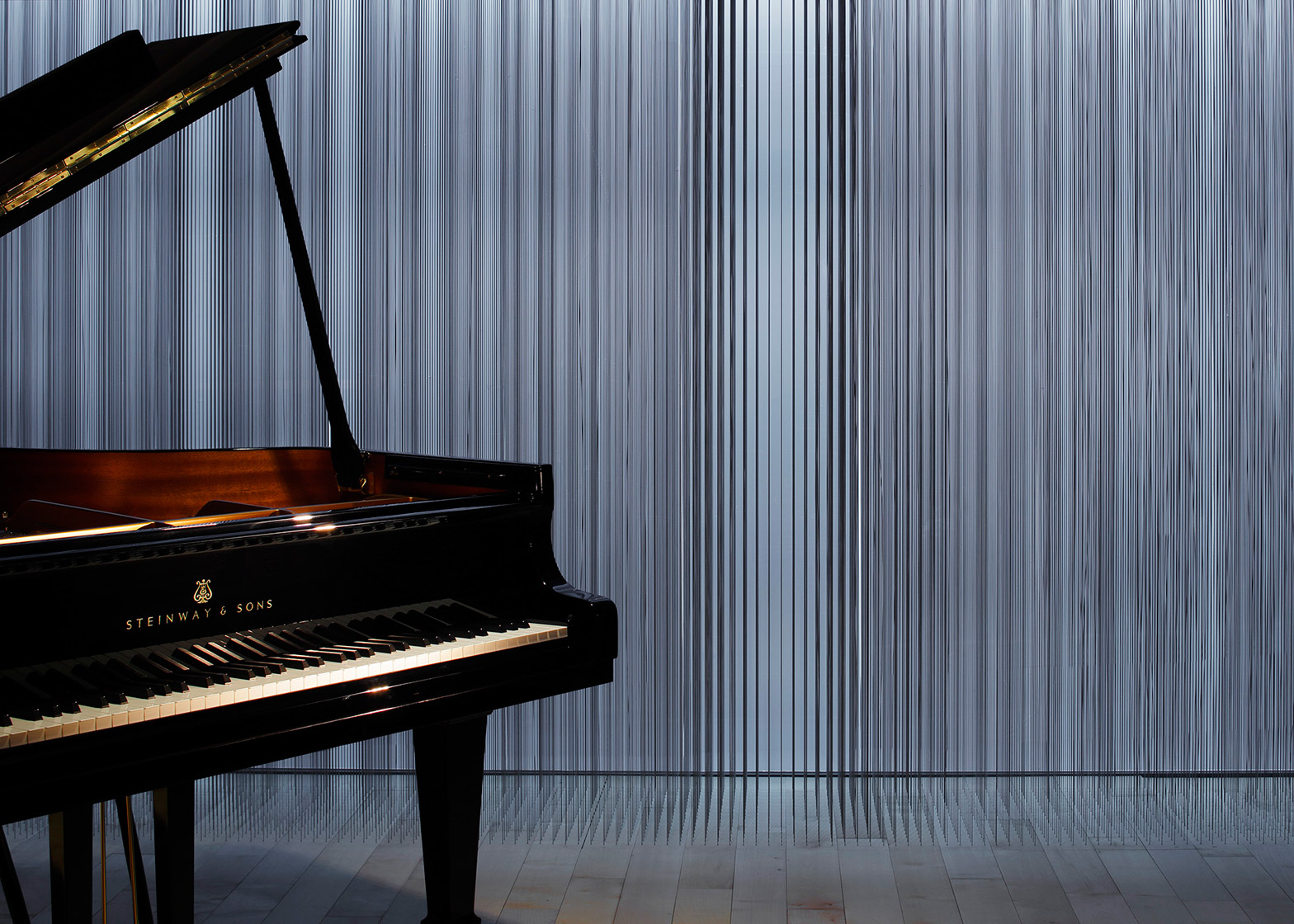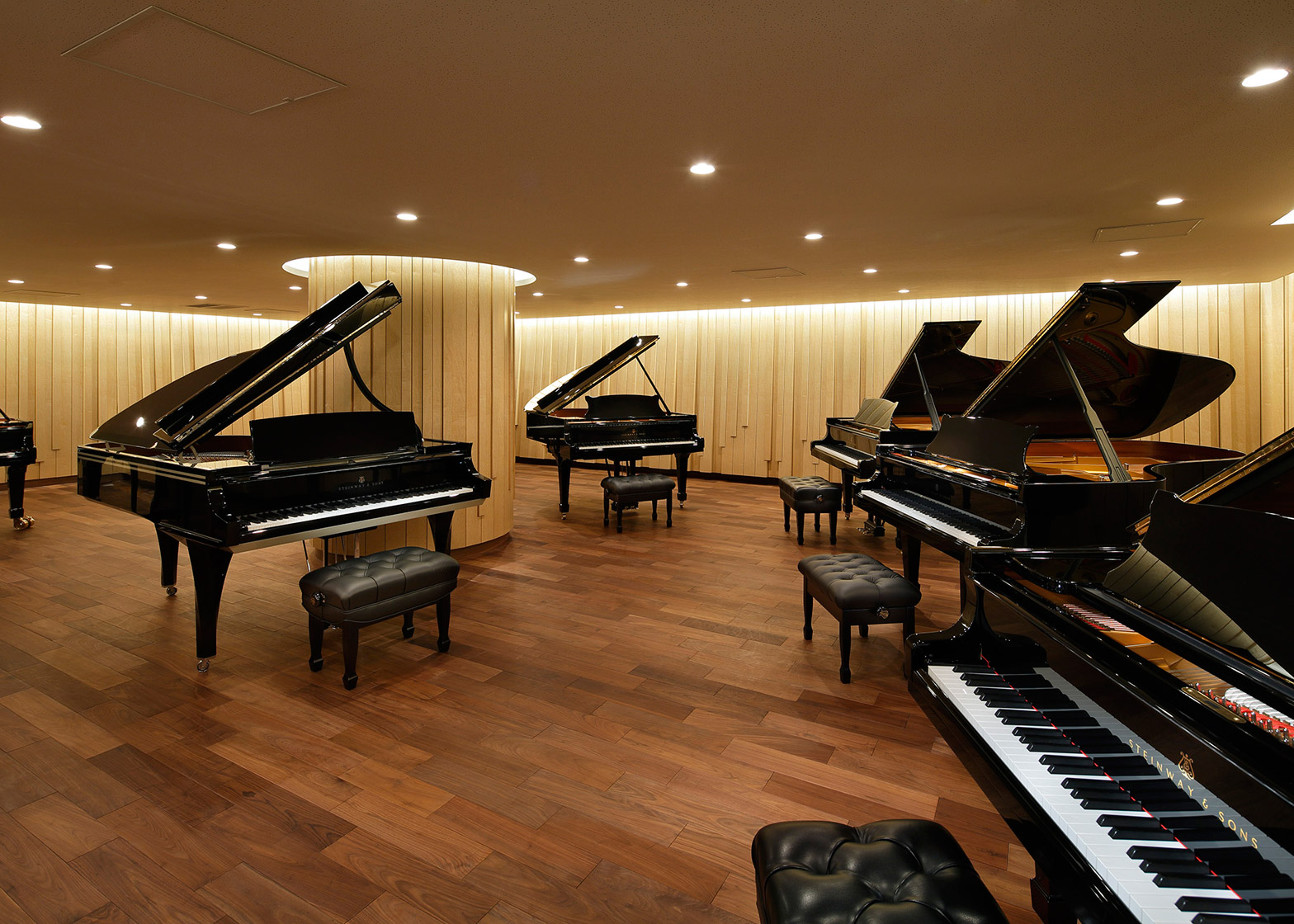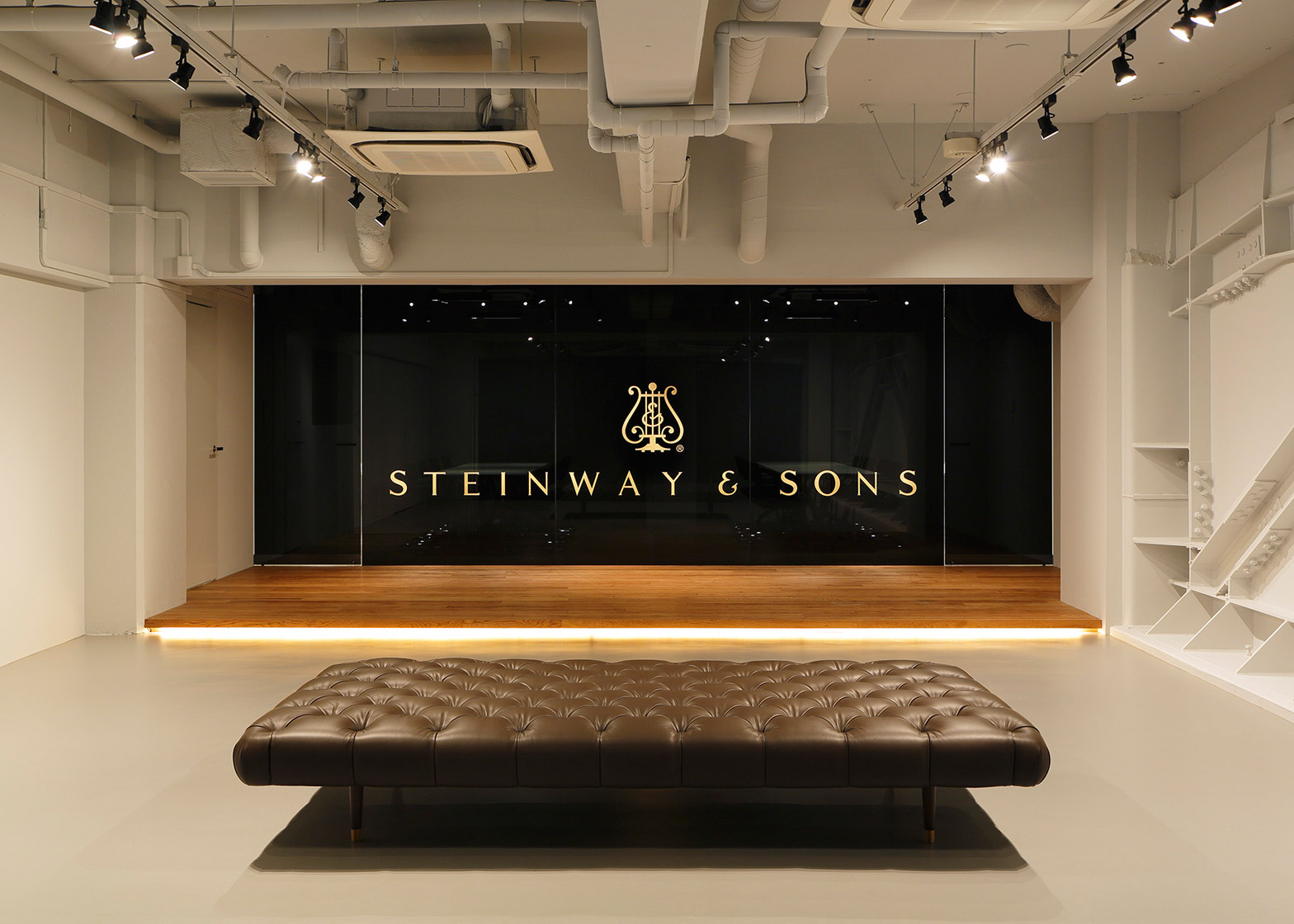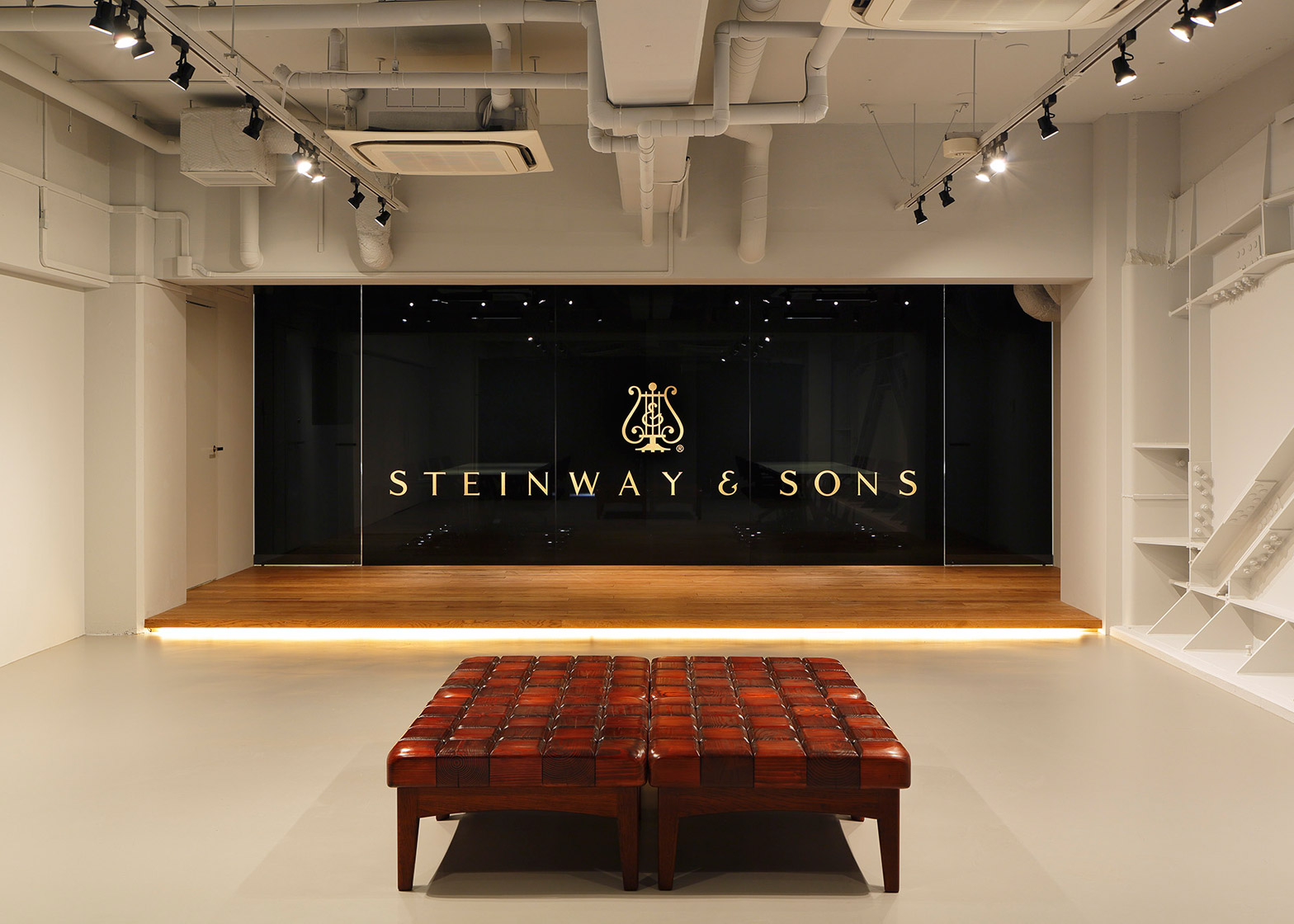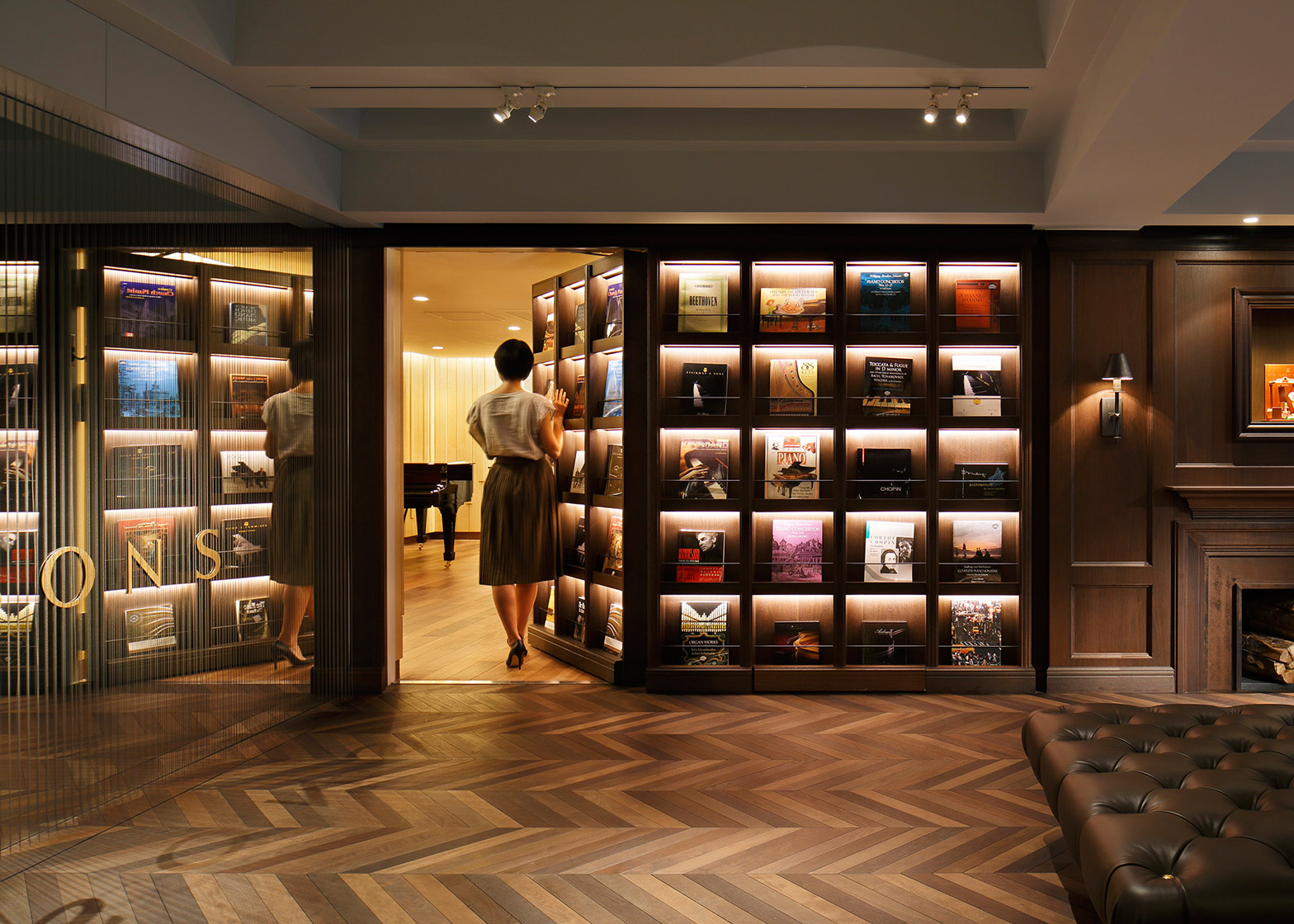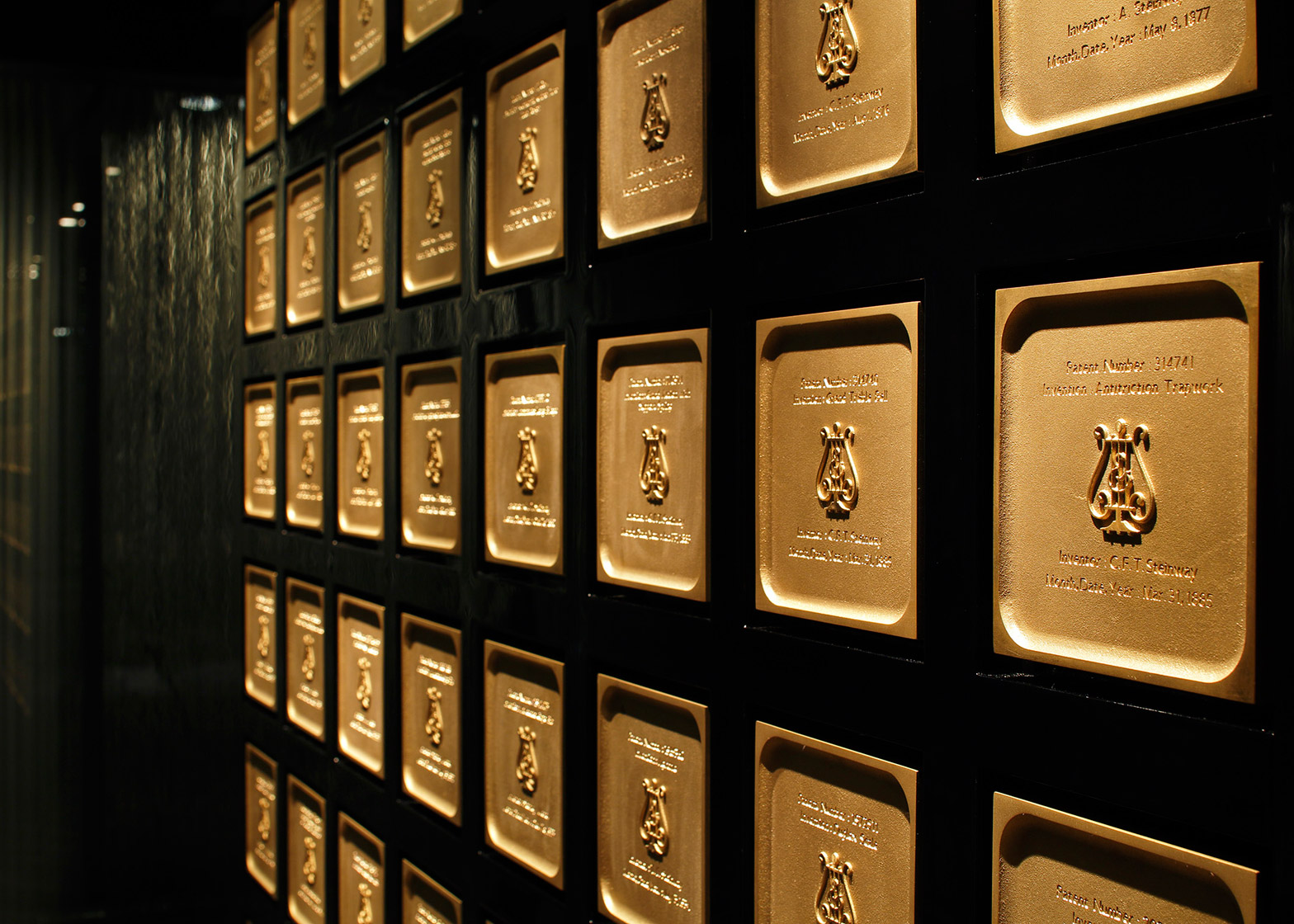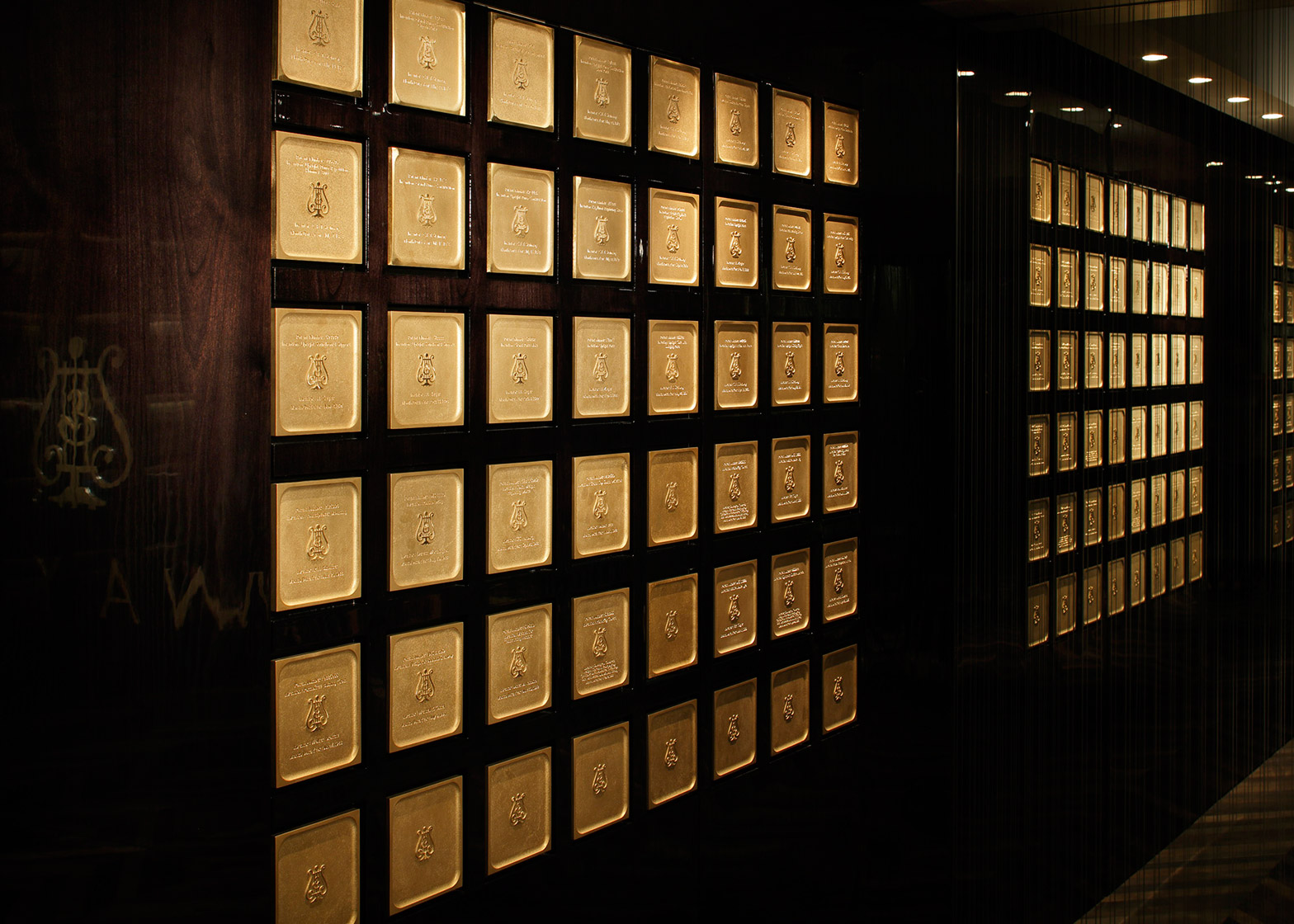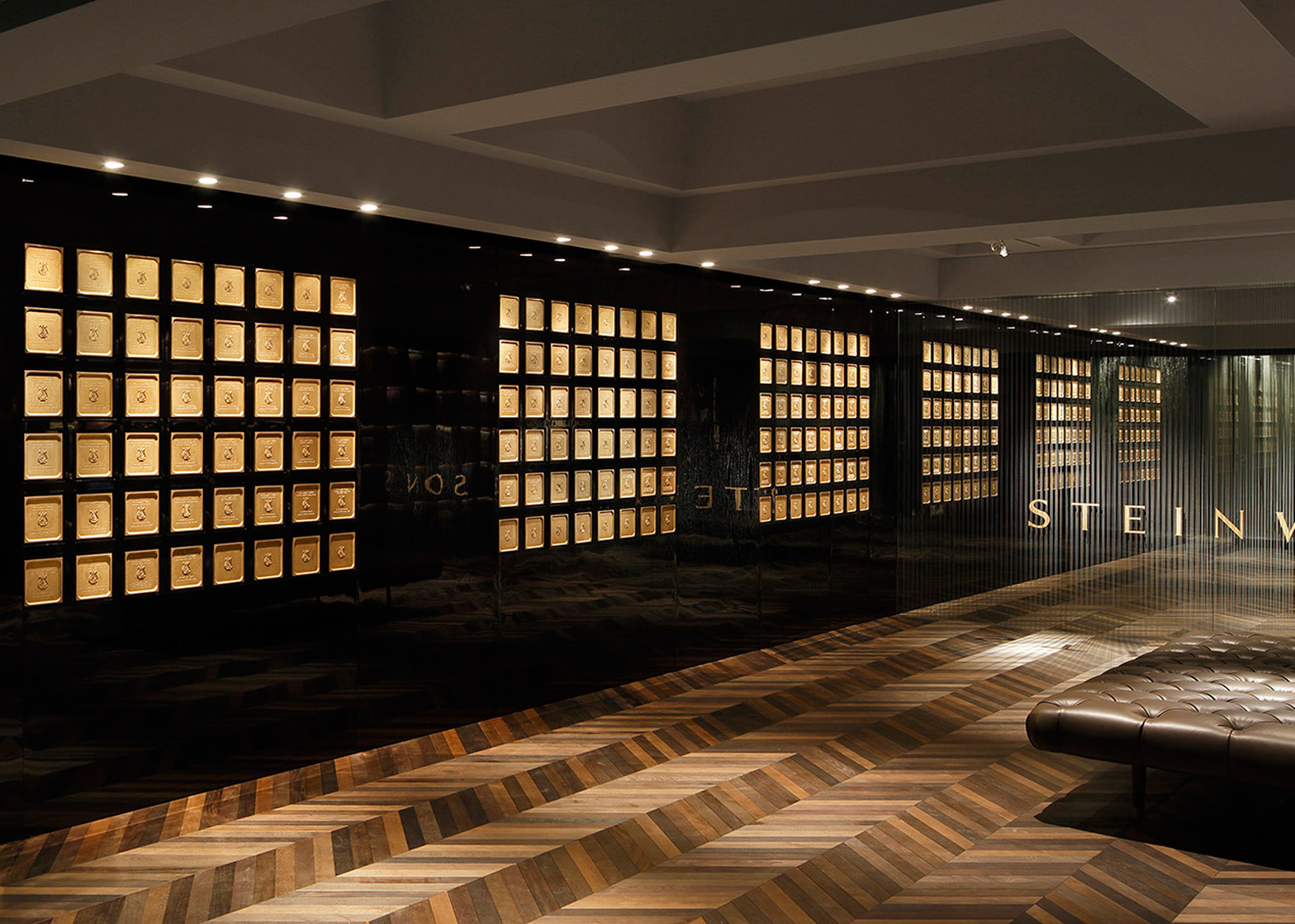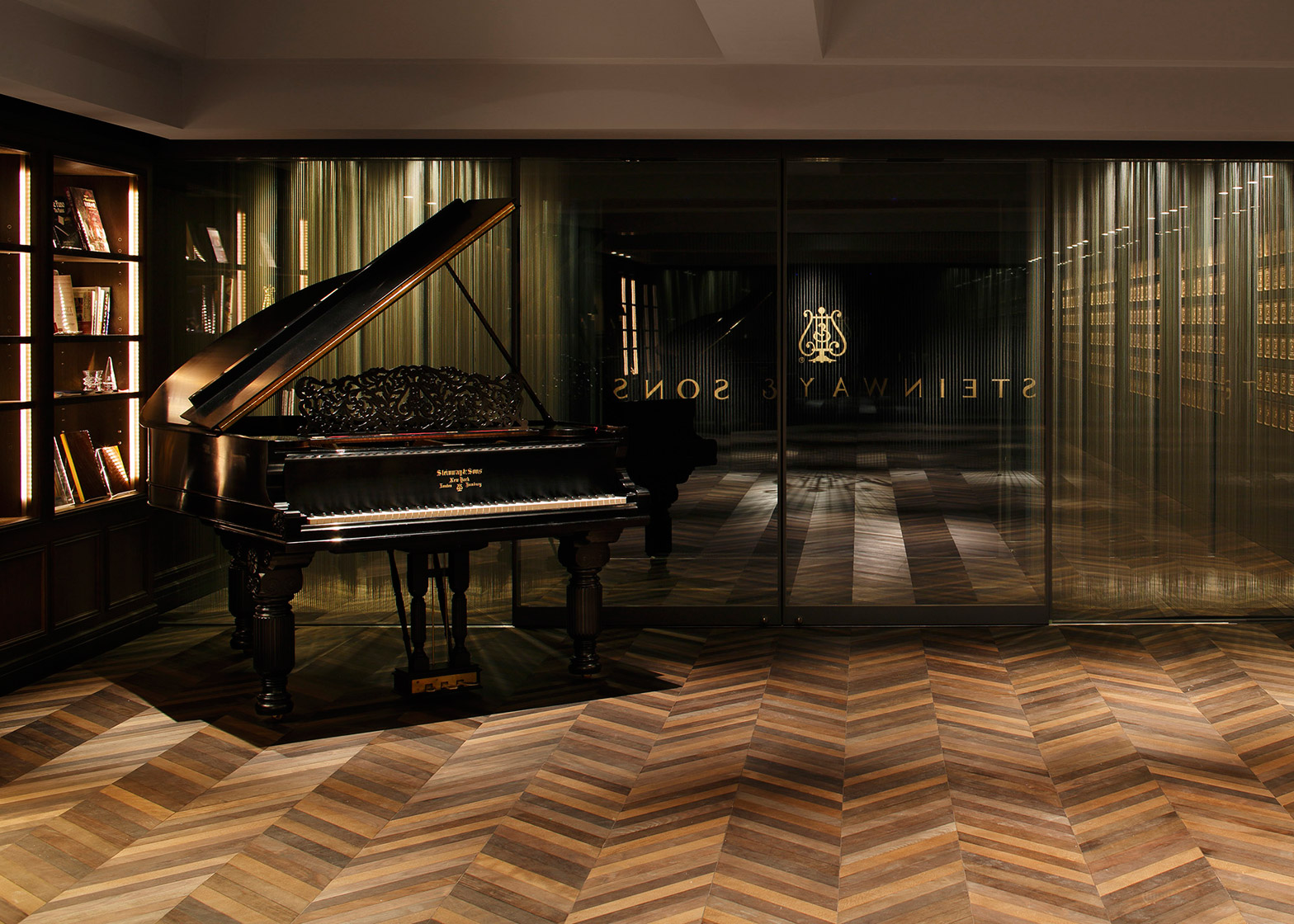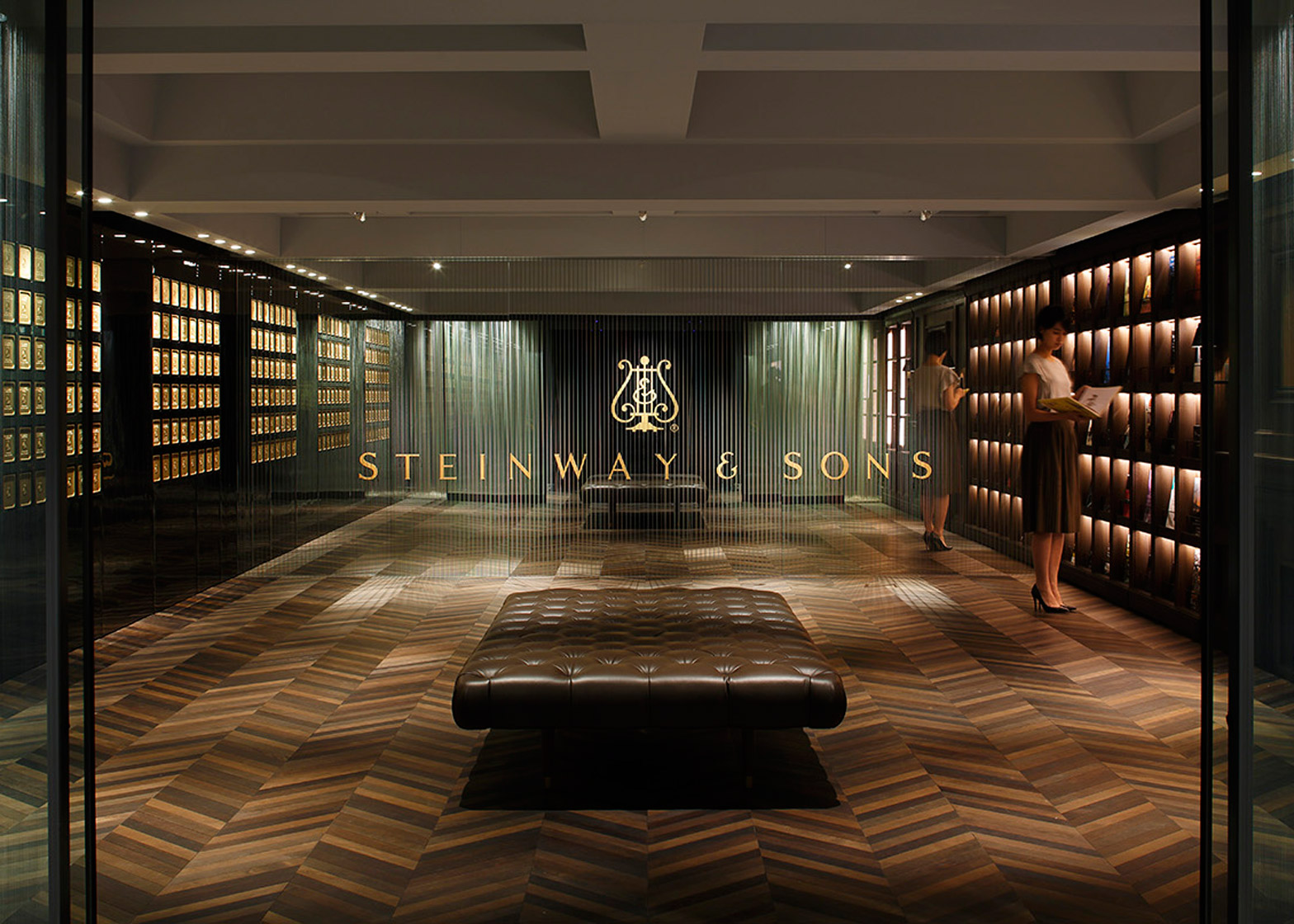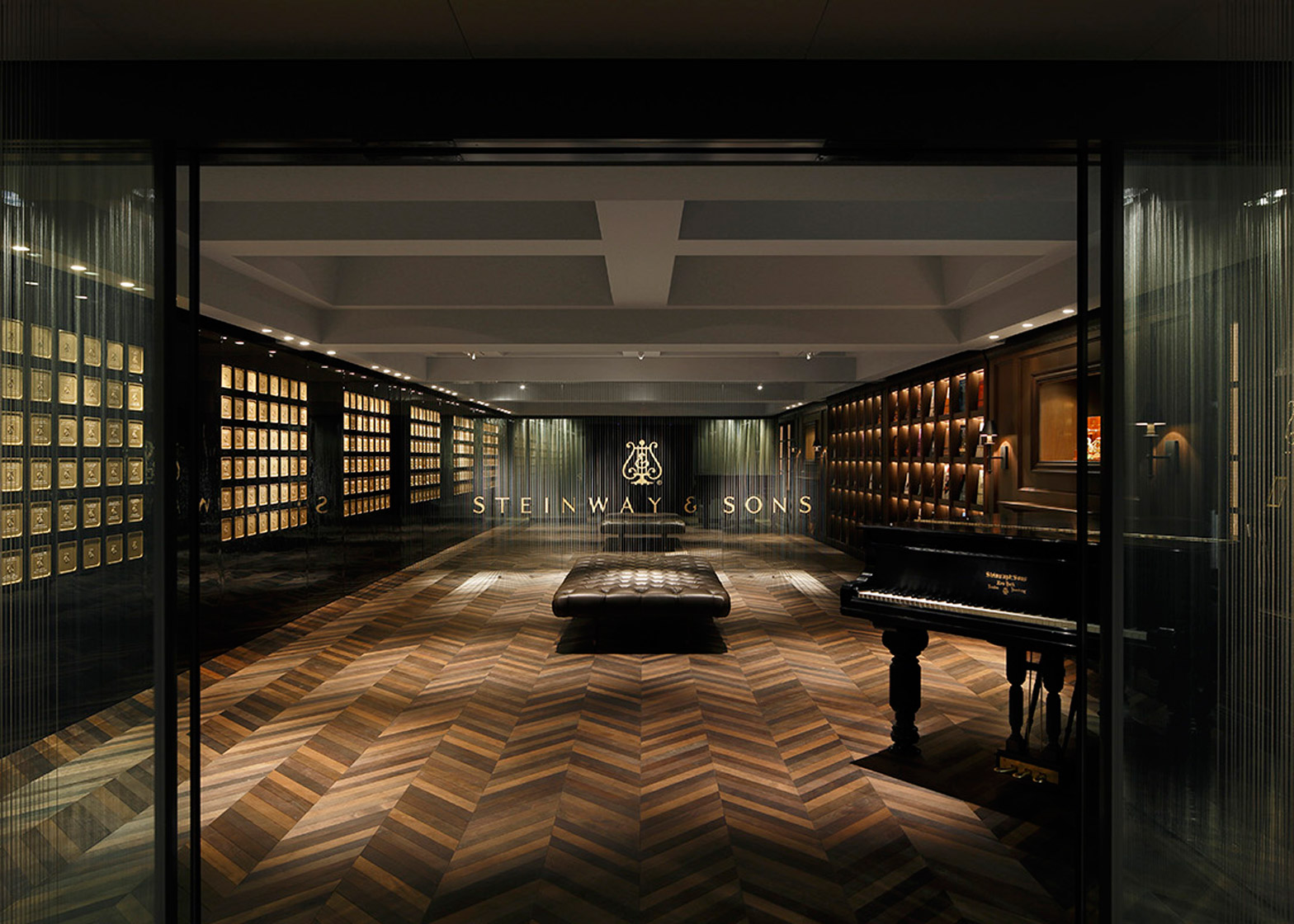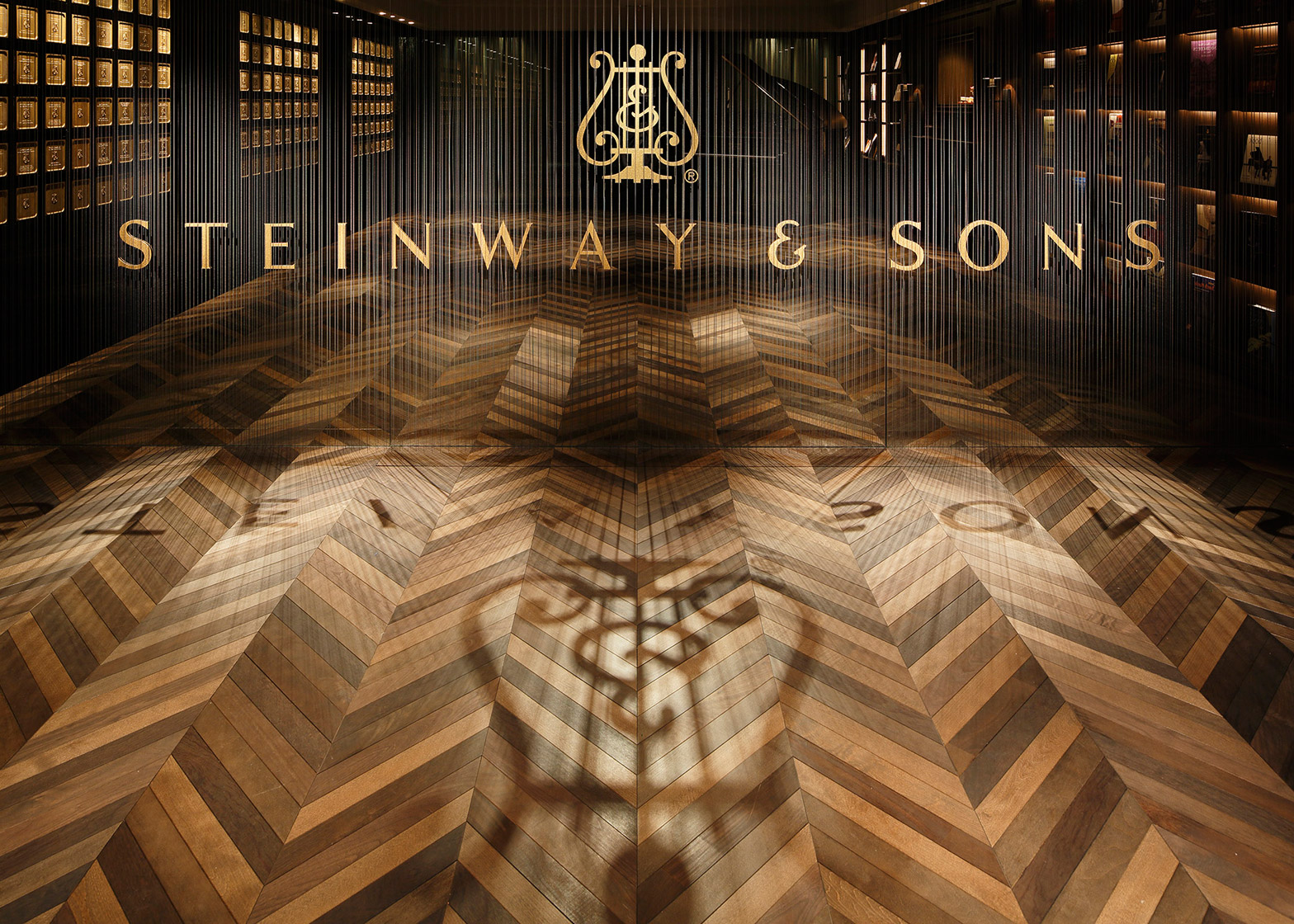This Tokyo piano shop is designed by local architecture studio Salt to reflect the craftsmanship of the instruments on sale inside (+ slideshow).
Salt was tasked with designing the Asian flagship store for Steinway & Sons. The New York-based piano company was founded in the mid-19th century, so the studio wanted to replicate the brand's history through the design.
"Our aim was to create a space where their clients can feel Steinway's craftsmanship, philosophy, history, and the beauty of their instruments," said studio founder Ogata Yoshiki.
"Clients will feel attached to everything about Steinway in this showroom, beyond the concept of objects."
The studio updated the storefront by adding 12,000 stainless wires – the same numbers of tensioned wires used in Steinway pianos – across the large windows.
"Piano strings have 20-ton tensions, which create the echo," said Yoshiki. "In the same way that the piano wires receive tension, which cannot be seen with the human eye, the stainless wires on the facade bring the space both tranquility and a tense atmosphere."
"To liven up the clients' mood to purchase a piano, when they walk in front of the string screen, it almost feels like the screens are trembling and making music," he added.
Visitors enter the store through a reception designed to resemble a luxurious European manor, said Yoshiki.
Here, a gallery-style bookshelf showcases literature detailing Steinway's history, while a lacquered wall displays each of the company's 125 patented designs.
"Steinway & Sons has acquired more than 125 patents since their first acquisition in 1857," said Yoshiki.
"We have created a patent wall where all of them are displayed. This wall is lacquered, which is said to be an origin of the black colour coating of pianos."
"Each patent is displayed inside the engraved surface of this wall, giving visitors the impression that Steinway is preserving their traditions and histories," he added.
Two separate tuning rooms are located to the left of the reception area. A single grand piano is lit by a spotlight inside each of these rooms – making them visible through the store's glass frontage.
Five kinds of wood typically used to make pianos – beech, bubinga, walnut, maple and mahogany – are arranged in a chevron pattern to provide flooring in each space.
To create the effect of a concert hall echo board, uneven wooden panels of bubinga and maple wood also cover the walls in a rib-like formation.
In one of the tuning rooms, the wooden panels are intended to simultaneously represent the shape of a piano lid and be reminiscent of thick theatre curtains.
"By recreating the craftsmanship, philosophies, the beauty of the instruments, and the history as architecture that embodies Steinway & Sons, this showroom has become a space to add feelings, scenes, and experiences to the brand," said Yoshiki.
Architecture studio Adept also created timber-lined music rooms for specific instruments in The Danish Music Museum, while Basalt Architecture gave a Paris music school copper walls and cantilevered studios.

